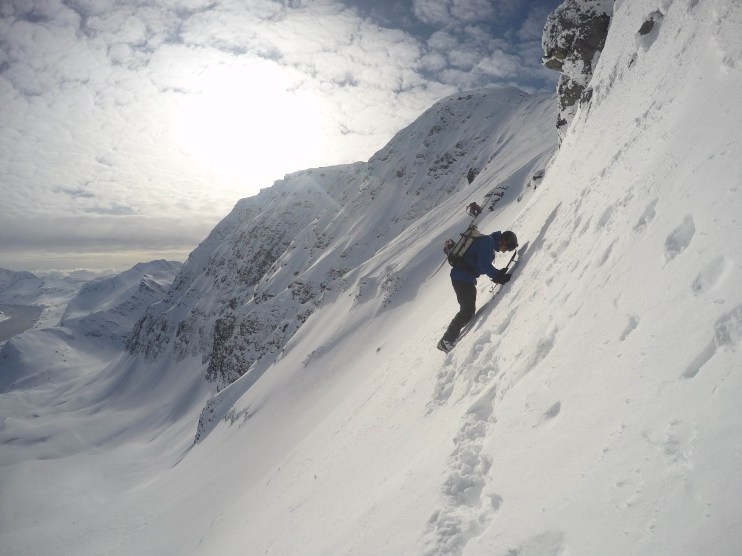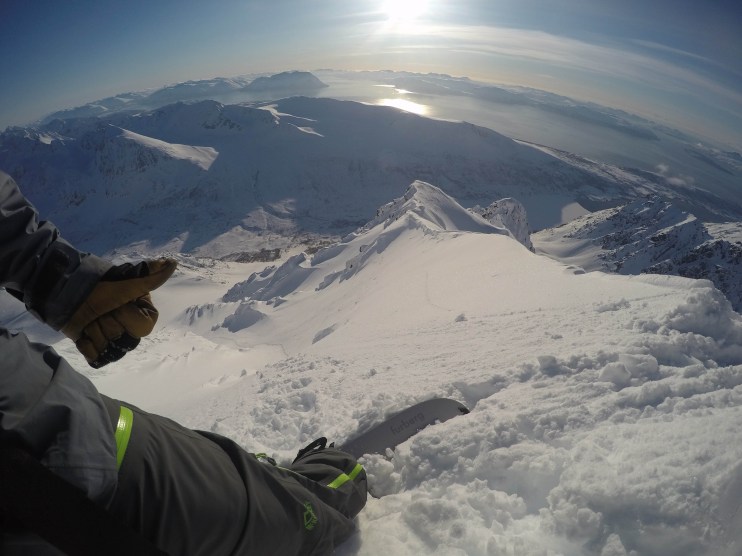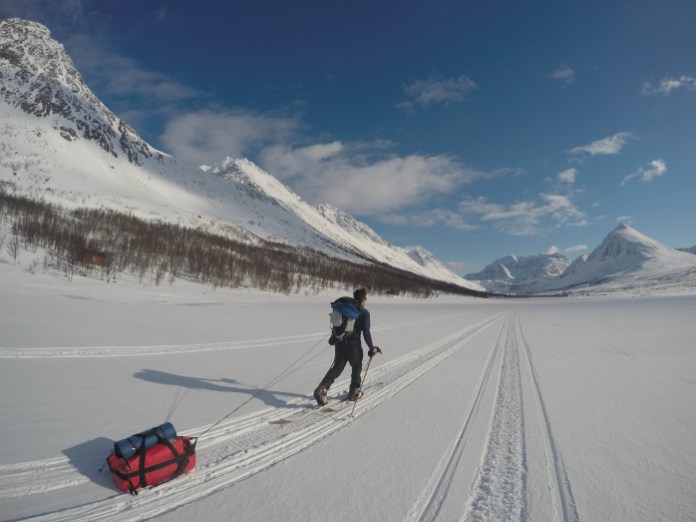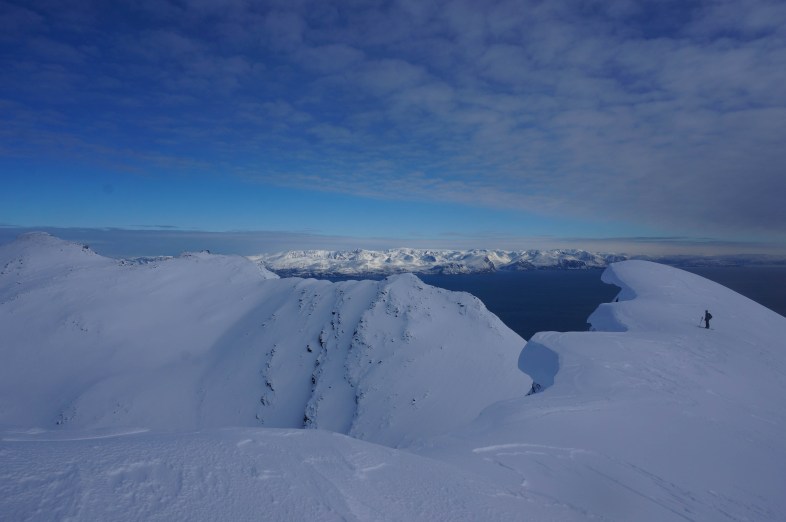Splitboards, Fjords, and a Ford Fiesta
Our fingers were dragging as we used our poles to push across the last of the flats before the partially plowed turnaround at the end of the only road. Our tracks high on the mountain were fading with the growing shadows and intense alpenglow. Ocean waves were dragging soccer ball sized rocks up and down the beach. The temperature was dropping with the increasing north wind. Our stomachs were growling. We were surprised to see two older Norwegians loading a snowmachine that had seen better days on a trailer next to our shiny white Ford Fiesta. I was starting to wonder where we would pitch our tent on this remote island in Northern Norway. As far as we knew, the island had a population of four, including Calum and I. With no vegetation to use as a wind block, it was looking like it would probably be a cold night for us.
I am not sure where I first got the idea to go to Norway, but the place has been stuck in my head for a long time. I decided going on exchange to the University of Bergen, Norway to study Geography should include a strong focus on splitboarding. Calum, a solid splitboarder from Scotland that I had met two years ago at the University of Alaska Fairbanks, just happened to also be studying in Norway with similar goals of balancing his academic activities with splitboarding. The stars aligned and we were able to fly north to Tromsø, Norway and spend twelve days exploring the Lyngen Peninsula and surrounding islands.
Navigating an overseas country took a bit more effort than a trip into my home mountains, the Chugach Range in Alaska. Before we could even think about making our first turns, we had to figure out a flight, a rental car, new weather patterns, a foreign language, a lost wallet, broken bindings, and a leaky boat. Then we started to consider the normal challenges of terrain selection and avalanche danger. We had outstanding luck finding places to sleep. After the first few nights in a bed and breakfast, we laid our sleeping bags out in an abandoned caravan, a day use cabin with a fireplace, a public use cabin with a sauna, and of course my trusty tent. We found that dry bags work exceptionally well for dragging overnight gear into places away from the car.
Our boat was old enough that it could have been built by the Vikings themselves. It required constant bailing but got us where we needed to go.
Even though we spent days scrolling around Google Earth, we were blown away by the terrain. It was easy to find 3,000-foot runs, and some were pushing 5,000 feet. The snow was soft and smooth all the way down to beaches covered in salty seaweed and polished black rock. From several summits, the only thing between the North Pole and us was a relatively short stretch of cold, dark saltwater. There was something about that view that was particularly moving.
As we traveled north from Tromsø, the people became friendlier and more spread out. In one town, we talked with a tired fisherman with vibrant blue eyes who was working late into the night to fix his daughter’s boat. He wanted her to be prepared to go out with him at 5 a.m. the next morning. He explained how he struggled to stay in business as large boats are working to buy up the entire cod quota. As we walked away from the peer, a couple stepped out of their weekend cabin to get into their Jacuzzi. The two lifestyles contrasted like fire and ice.
We could not have asked fore better snow, weather, and avalanche conditions on our trip. Overcoming the multitude of logistical problems on the trip felt like a big accomplishment. However, the real highlight of the trip was meeting the genuine people that call Northern Norway home.
As the two local Norwegians loaded their snowmachine on a trailer, they told us they had just hauled firewood into a day use cabin. It was 1 km down the beach. It would be no problem if we slept there. We tossed sleeping bags and some food in a bag and strapped our skis back on. We felt small as we skinned along the beach to the rhythm of waves swallowing boulders. The last rays of sun streamed through a hole in the clouds and echoed around the fjord.
Text: Trevor Grams Photos: Trevor Grams and Calum Macintyre Originally published at: splitboard.com






